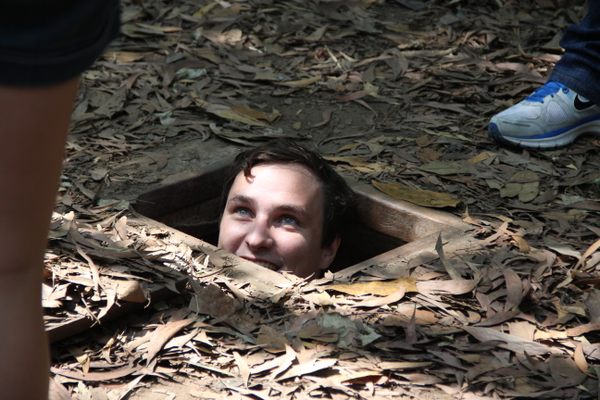Vietnam’s Cu Chi Tunnels
During the height of the Viet Nam conflict the Viet Cong required a base of operations that was discreet and mobile. Their solution to this problem was the Cu Chi tunnels. The tunnels, which are located in an outlying district of Ho Chi Minh City (formerly known as Saigon), are an intricate warren of passageways designed to convey both men, and the material necessary for waging a guerilla war against the occupying American forces.

(source)

With only very small trap doors providing entrances and exits, the tunnels were dark, cramped and infested with different jungle insects. The Viet Cong guerillas would normally spend the daylight hours ensconced in these virtually undetectable hideaways only to come out at night to look for food or conduct operations. Conditions for these guerillas in the tunnels were harsh and many of them fell victim to various parasites and infections they contracted within the labarynth.
In the early stages of the conflict the US strategy when confronted with these tunnels was to flush them with either gas or water in the hope that this would force the Viet Cong fighters out in the open.
US troops were reluctant to venture into the tunnels themselves, as many of the entrances were booby
.jpg) trapped with high explosives or punji pits. However, as the war dragged on the US Army began to develop specialized units of ‘tunnel rats’, soldiers who were specially trained to enter the tunnels with nothing more than a pistol and a flashlight and flush out the enemy.
trapped with high explosives or punji pits. However, as the war dragged on the US Army began to develop specialized units of ‘tunnel rats’, soldiers who were specially trained to enter the tunnels with nothing more than a pistol and a flashlight and flush out the enemy.
Today the Cu Chi tunnels are a popular tourist destination. Visitors can crawl through the tunnels, and in doing so, experience the cramped darkness that was an everyday struggle for the Viet Cong. However, be warned: these tunnels are not for the claustrophobic.
Small image sources, in order of appearance: kudos and thank you!




Follow us on Twitter to get the latest on the world's hidden wonders.
Like us on Facebook to get the latest on the world's hidden wonders.
Follow us on Twitter Like us on Facebook